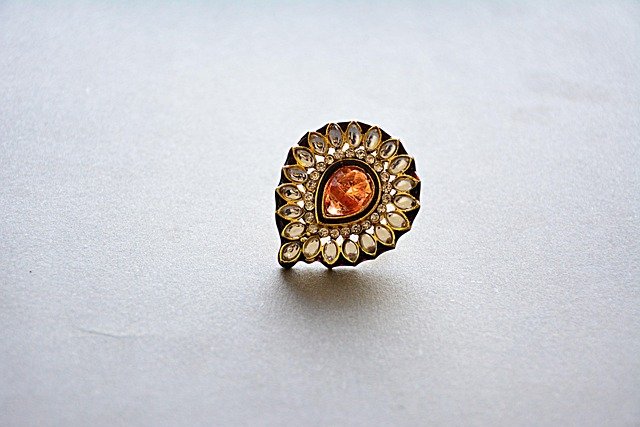Explore helpful tips on choosing Victorian engagement rings
Victorian engagement rings represent an era of romantic elegance and intricate craftsmanship that continues to captivate couples today. These stunning pieces, originating from Queen Victoria's reign (1837-1901), showcase distinctive design elements that set them apart from modern styles. Understanding the unique characteristics, materials, and symbolism of Victorian rings will help you make an informed decision when selecting this timeless piece of jewelry for your special moment.

Victorian engagement rings embody the romance and sophistication of a bygone era, making them increasingly popular choices for couples seeking something truly distinctive. The Victorian period, spanning over six decades, produced jewelry that reflected the social changes, technological advances, and artistic movements of the time. These rings tell stories through their intricate details and meaningful symbols, creating heirloom pieces that transcend generations.
Discover Essential Design Features
Victorian engagement rings showcase several distinctive design elements that define their aesthetic appeal. The most recognizable feature is the use of nature-inspired motifs, including flowers, leaves, vines, and serpents. These organic shapes were often incorporated into the band design or used as decorative elements surrounding the center stone. Another hallmark characteristic is the intricate metalwork, featuring detailed engravings, filigree patterns, and milgrain edges that demonstrate exceptional craftsmanship.
The setting styles of Victorian rings also differ significantly from contemporary designs. Many feature raised settings that elevate the center stone, creating dramatic profiles and allowing maximum light to enter the gemstone. Cluster settings were particularly popular, arranging smaller stones around a central gem to create the appearance of a larger, more elaborate piece. These design choices reflected the Victorian era’s appreciation for ornate beauty and symbolic meaning.
Learn About Popular Materials
Victorian jewelers worked with a variety of precious metals and gemstones that were both fashionable and meaningful during the era. Gold was the predominant metal choice, with yellow gold being most common in the early Victorian period and rose gold gaining popularity later. Silver was also frequently used, often in combination with gold to create striking two-tone effects.
Diamonds were highly prized but not as readily available as today, making them reserved for the most special pieces. Colored gemstones played a significant role in Victorian jewelry, with sapphires, rubies, emeralds, and pearls being particularly favored. Semi-precious stones like garnets, amethysts, and turquoise were also popular choices, often selected for their symbolic meanings rather than their monetary value.
Uncover Decorative Motifs
The decorative motifs found in Victorian engagement rings carry deep symbolic significance that adds layers of meaning to these romantic pieces. Floral designs were extremely popular, with roses representing love, forget-me-nots symbolizing true love and remembrance, and ivy indicating fidelity and eternal love. Animal motifs also appeared frequently, with serpents representing eternal love (inspired by Queen Victoria’s own engagement ring), birds symbolizing the soul’s flight to heaven, and butterflies representing transformation and rebirth.
Hands, hearts, and crowns formed another category of meaningful symbols, often combined in the traditional Claddagh design or used separately to convey messages of friendship, love, and loyalty. These symbolic elements were not merely decorative but served as a visual language that communicated the wearer’s sentiments and beliefs, making each ring a deeply personal expression of love.
Appreciate Victorian Craftsmanship
The level of craftsmanship in authentic Victorian engagement rings reflects the era’s dedication to artistic excellence and attention to detail. Skilled artisans employed techniques that are rarely seen in modern mass-produced jewelry, including hand-engraving, repoussé work, and intricate filigree construction. Each piece was individually crafted, resulting in subtle variations that make every Victorian ring unique.
The construction methods used during this period were designed for durability and longevity. Bezels were often thick and protective, settings were reinforced with additional metalwork, and prongs were substantial enough to securely hold gemstones through decades of wear. This robust construction explains why many Victorian rings have survived in excellent condition, continuing to serve as functional and beautiful engagement rings today.
| Ring Style | Price Range | Key Features |
|---|---|---|
| Early Victorian (1837-1860) | $2,000-$8,000 | Yellow gold, nature motifs, colored gemstones |
| Mid Victorian (1860-1885) | $1,500-$6,000 | Mourning jewelry influence, darker themes, jet accents |
| Late Victorian (1885-1901) | $2,500-$10,000 | Diamond prominence, lighter designs, white metals |
| Reproduction Victorian | $800-$3,500 | Modern craftsmanship, vintage-inspired design |
Prices, rates, or cost estimates mentioned in this article are based on the latest available information but may change over time. Independent research is advised before making financial decisions.
Make Informed Choices for Your Ring
When selecting a Victorian engagement ring, several factors should guide your decision-making process. First, determine whether you prefer an authentic antique piece or a modern reproduction that captures Victorian aesthetics. Authentic Victorian rings offer historical significance and unique character but may require more maintenance and could have sizing limitations. Reproduction rings provide the Victorian look with modern durability and sizing flexibility.
Consider the lifestyle compatibility of your chosen ring, as Victorian designs often feature raised settings and delicate details that may not suit highly active lifestyles. Examine the condition of antique pieces carefully, checking for wear, previous repairs, and the security of stone settings. Finally, work with reputable dealers who can provide authentication and detailed information about the ring’s history and condition.
Victorian engagement rings offer a romantic alternative to contemporary designs, combining historical significance with timeless beauty. By understanding their distinctive features, materials, and symbolic meanings, you can select a ring that not only captures the elegance of the Victorian era but also perfectly expresses your unique love story. Whether choosing an authentic antique or a faithful reproduction, a Victorian-style engagement ring provides a meaningful connection to the past while celebrating your future together.


